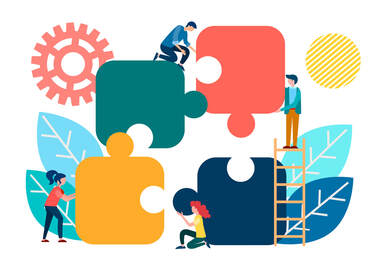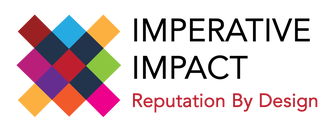 Written by Madeleine White, Imperative Impact Intern Spring 2021, on her experiences and learnings from a remote, virtual internship. On the first day of my internship with Imperative Impact in February 2021, I got ready to go to work – hair done, makeup on, ready for my first “office” job. This may seem silly as I wasn’t going to the Toronto office, I was heading down two flights of stairs to my basement workspace. But I wanted to set the tone for a day of work, and soon learned that this was a practice to stick with. After clicking the link for my first Zoom meeting, I was greeted by four big smiles from four brilliant and enthusiastic women. They seemed as eager to meet me as I was to meet them and immediately made the “Zoom office” feel like an incredibly safe place. Twelve weeks later, I had established a new favourite word. Challenge. I used to avoid anything to do with ‘challenge’ and now I seek it. Challenging yourself and others is a primary building block for growth, learning, and character building. To say onboarding from my basement was challenging would be an understatement, however the experience definitely helped me grow as a person and a professional. Over the course of my internship, the challenges varied. I had to overcome the disconnect I felt with my teammates in between Zoom meetings and find the courage to ask questions. Even though there’s a constant open door policy, I was intimidated by not knowing what my teammates were doing, how busy they were, inability to hear tone of voice or see body language and facial expressions. I had to overcome my own fears and treat the experience like we were in an office - just turn around and ask a question!
0 Comments
 When the world bites When the lockdown extends When you’re feeling sad I simply remember my favourite things And then I don’t feel so bad Can you believe we’ve made it through 2020? This year was truly like no other, and the pandemic put our resiliency to the test over and over again. With the holiday season upon us, our team at Imperative Impact would love to share with you a few of our favourite things that help make an impact in communities at home and around the world. Included in this list are services, experiences, and gifts that create positive impacts in society and contribute to innovative causes. Moreover, they promote trailblazing opportunities that can help shape Canada’s recovery when our cold winter melts into spring and foster a more sustainable and equitable future! Click the read more button to view our full wish list! An IdentityNORTH Case Study Brand reputations are built on people’s beliefs or opinions around a brand. Any time someone interacts with a brand, it’s an opportunity to either shift their positive, neutral, or negative outlook they have associated with it. Creating special moments that leave positive impressions on attendees can build up your organization’s reputation. Even without the in-person aspect, virtual events have the potential to delight attendees and leave a lasting impression. What, then, are the elements of a carefully and successfully curated event that can bolster your brand and reputation? One successful project that our team led this Fall was the IdentityNORTH 2020 Virtual Fall Symposium. IdentityNORTH is Canada’s premier digital economy event, bringing together top Canadian and international leaders to share ideas and knowledge to drive Canada’s digital future. Our team was honoured to lead in the strategic planning and execution to bring IdentityNORTH’s vision to life on the virtual stage. Despite its virtual setting, the Fall Symposium delivered opportunities for meaningful connections and impactful moments for all in attendance. Playing within the confines of a virtual stage presents unique opportunities that can still directly and positively impact brand reputation.
 Resilience. We aren’t born with it, nor is it innate; however, through generations of experience and our willingness to survive, humans have developed a propensity to adapt or persist in the face of adversity. Each crisis or tough circumstance acts as a trial that enables people and organizations to stretch their boundaries, learn to protect against new threats, and better prepare themselves for any new challenges going their way. At Imperative Impact, we pondered over countless conversations around building back better and factors that make more resilient communities. We marvelled at the speed at which certain companies pivoted and restructured, whilst empathizing with the companies that struggled to keep afloat. As autumn approached and social distancing measures began loosening, our curiosity remained fixed on the topic of resilience and how its very definition is shifting as the world evolves. For years, resilience was seen through an external locus of control lens. Reactively, we learned to spring back and recover from difficulties by riding the waves of stress, crisis, and uncertainty. Many organizations awaited changes week by week to slowly readjust to circumstances outside of their control. Conversely, the “resilients”, as coined by McKinsey, all had similar attributes: they proactively tackled pain points within their control, monitoring, deciding and executing on their own contingency planning. As a result, they were able to maintain flexibility around their own definition of resilience by taking ownership of any situation they were up against. |

